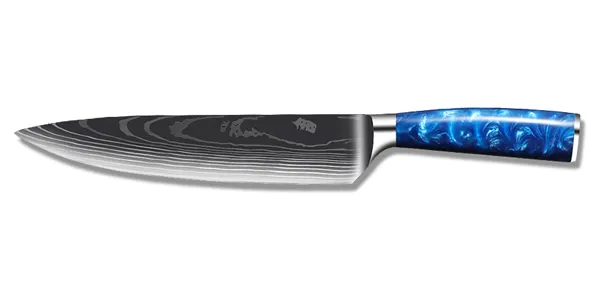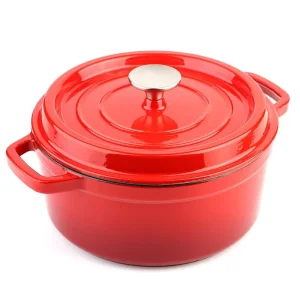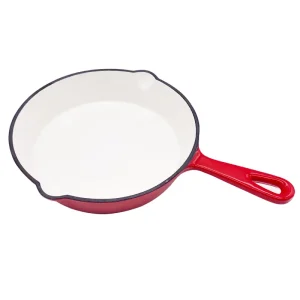Enameled Cast Iron Cookware Manufacturers
Changwen Enameled Cast Iron Cookware uses high-quality enamel glaze, which is wear-resistant and durable, with three-layer enamel craftsmanship, one layer of enamel base glaze and two layers of enamel top glaze.
Home > Enameled Cast Iron Cookware
Changwen Enameled Cast Iron Cookware
Enameled cast iron cookware refers to cast iron pots, pans, and skillets that have been coated with a durable enamel glazing. This type of cookware combines the superb heat retention and even heating characteristics of cast iron with the benefits of a non-reactive, easy-to-clean enamel surface.
The mold of each Changwen enamel pot is made of sand. After the inner and outer layers of liquid cast iron are completed, the mold is broken and the pot body is formed. Therefore, each mold can only be used once, and each enamel pot is unique.
Why Choose Changwen Enameled Cast Iron Cookware?
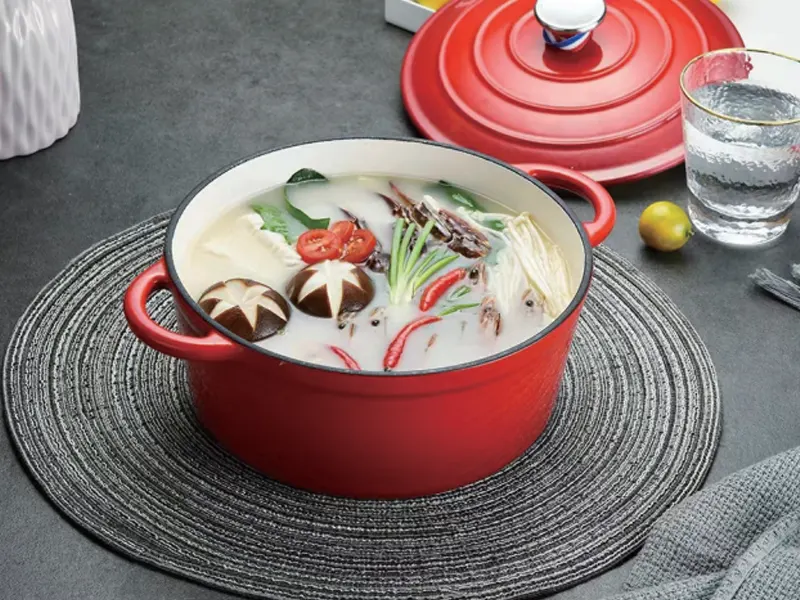
High-quality iron ore
Using international standard No. 26 iron ore as one-piece molding, it is durable for decades.
Natural glaze
Extracted from natural minerals and calcined at high temperature, it is beautiful, translucent, healthy and non-toxic.
Advanced technology
Advanced sand CNC technology makes the pot more rounded, the pot wall conducts heat more evenly, and the performance is improved.
Meet Changwen Enameled Cast Iron Cookware
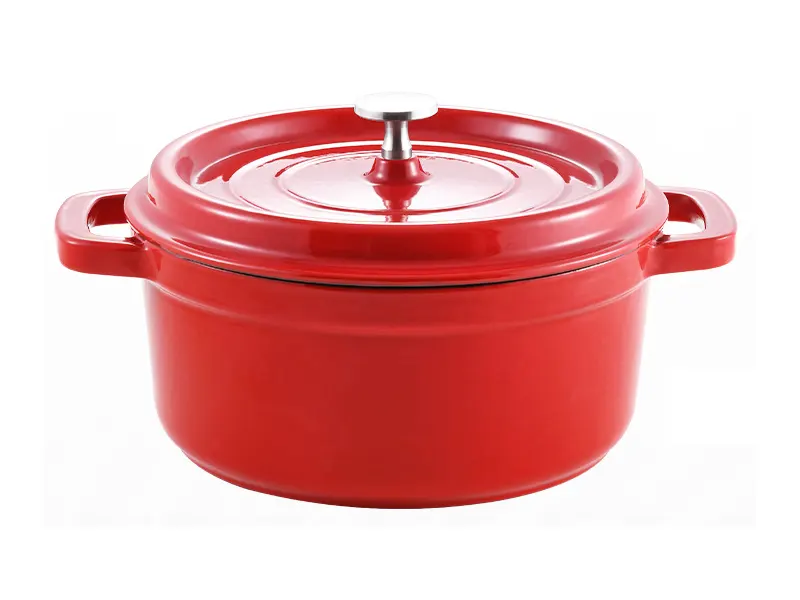
Classic Round Enamel Pot
Thickened pot wall for even heat conduction
Cast iron with uncoated high-quality enamel glaze
Various sizes available
The enamel pot adopts three-layer material technology, one-piece die-casting, the inner layer is a ceramic layer, no metal precipitation, more delicate, heat-resistant and high-temperature resistant, long-term use and non-stick.
Cast Iron Enameled Frying Pan
Integrated handle
The pot is molded in one piece, durable and long-lasting, and is made with craftsmanship.
Oil pouring port design
The oil pouring port design allows excess oil to be poured out, which is convenient and does not waste.
Rounded pot ears
The rounded pot ears are comfortable to hold and conform to the ergonomic structure.
Thickened pot bottom
The thickened pot bottom conducts heat more evenly, is not easy to stick to the pot, and the dishes are tender and juicy.

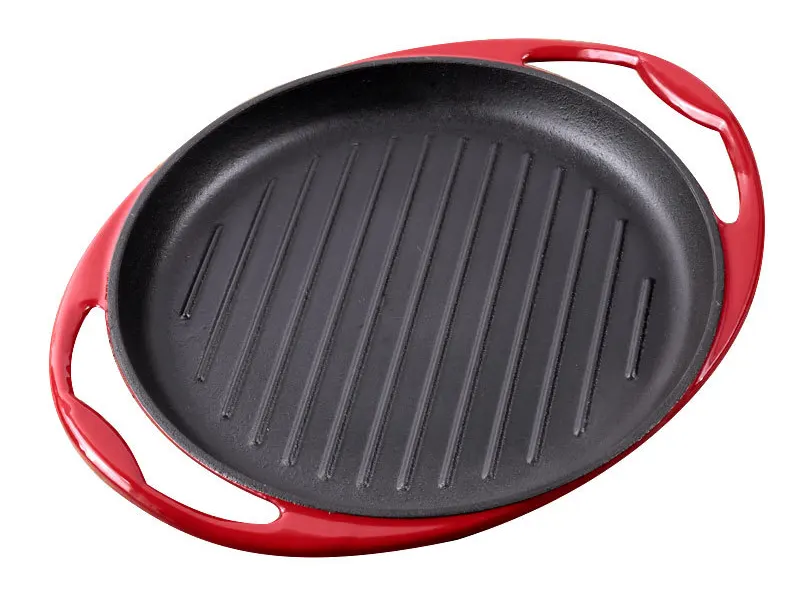
Cast Iron Enamel Steak Frying Pan
Horizontal pattern frying and baking non-stick pan is not easy to get stuck.
Physically non-stick, filter grease.
Restore the ancient method, overhead frying and baking, even heat conduction, crispy and tender skin.
The pan and handle are formed into a rounded handle, comfortable to hold.
The thick wall of the pan conducts heat more evenly and does not get stuck, keeping the ingredients fresh and juicy, non-stick pan.
The flat bottom of the pan is suitable for a variety of stoves.
The horizontal pattern concave and convex diversion design easily filters oil, frying and baking without greasiness.
How Cast Iron Enameled Cookware Manufactured
Changwen’s cast iron enameled cookware are made of high-quality Pig iron raw materials and pay attention to every detail during the manufacturing process to achieve excellent product quality. Continuous innovation while ensuring quality to provide you with high-quality cast iron skillet with rich functions.
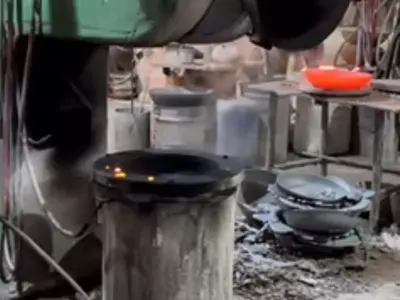
Mould
The pattern is pressed into fine, high-quality sand mixed with a bonding agent to create a negative impression, which forms the mold for the cast iron.
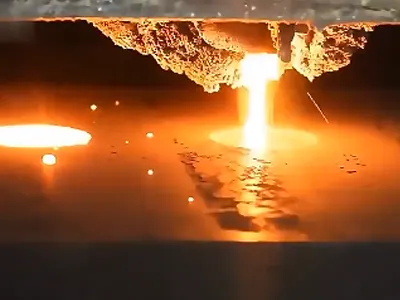
Casting
Iron, along with alloying elements like carbon and silicon, is melted in a furnace at very high temperatures. The molten iron is poured into the prepared sand molds.

Raw Castings
After the iron has cooled and hardened, the sand mold is broken apart to release the new cast iron pot.
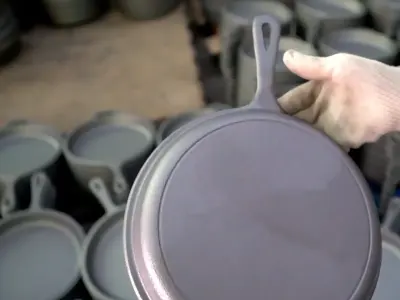
Purification
Removing Excess Material. The cast iron pot will typically have excess material such as gates, risers, or flashing that are removed at this point.
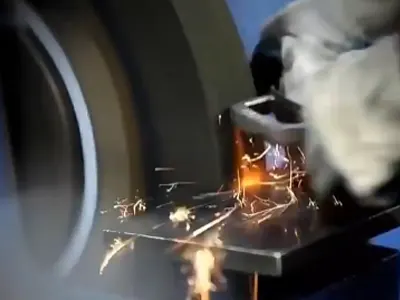
Polshing
Polish the pot surface to create a smooth surface.
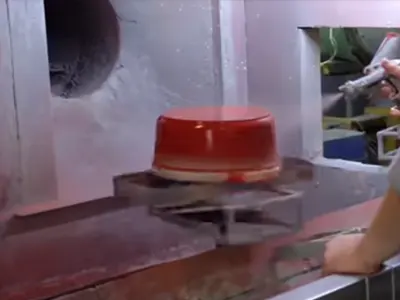
Enamel Spraying
Apply enamel glaze to cookware surfaces by spraying.
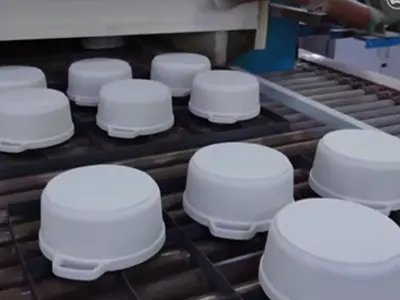
Heating
Heat treated to eliminate internal stress and improve durability.

Pre-seasoning
The cookware is coated with a thin layer of oil and baked in an oven at a high temperature to create a natural, protective non-stick layer.
Cast Iron Enameled Cookware FAQ
Enameled cast iron cookware is traditional cast iron coated with a layer of enamel, a glass-like material fused to the metal surface. This provides a non-reactive, smooth cooking surface that does not require seasoning and resists rust and corrosion.
Non-reactive Surface: Safe for cooking acidic foods like tomatoes and vinegar-based dishes.
No Seasoning Required: Unlike traditional cast iron, enameled cookware doesn’t need to be seasoned.
Easy to Clean: The enamel coating prevents food from sticking and can often be cleaned with soap and water.
Aesthetic Appeal: Available in various colors and designs, making it visually appealing for serving dishes.
Cleaning: Allow the cookware to cool before washing. Use mild dish soap and a soft sponge. Avoid abrasive scrubbers that can scratch the enamel.
Avoid Thermal Shock: Do not expose the cookware to extreme temperature changes. Let it cool before washing.
Stain Removal: For stubborn stains, soak in warm soapy water or use a paste of baking soda and water.
Use Low to Medium Heat: High heat can damage the enamel over time.
It is best to use wooden, silicone, or plastic utensils to prevent scratching the enamel surface.
Yes, it is suitable for all cooking surfaces, including induction, gas, electric, and ceramic. It can also be used in the oven.
Maintenance: Enameled cast iron requires less maintenance since it doesn’t need seasoning and is easier to clean.
Cooking Surface: Traditional cast iron develops a natural non-stick patina, while enameled surfaces remain consistent.
Weight: Both are heavy, but enameled cookware is often slightly heavier due to the added enamel layer.
Dutch Ovens: Ideal for slow-cooking stews, braising meats, and baking bread.
Skillets: Great for frying, searing, and baking.
Braisers: Perfect for casseroles, roasts, and one-pot meals.
While some manufacturers say their enameled cast iron is dishwasher safe, hand washing is recommended to preserve the finish and longevity of the cookware.
Soak: Fill the cookware with warm soapy water and let it soak for a few hours.
Baking Soda: Create a paste of baking soda and water and gently scrub with a non-abrasive sponge.
Boiling Water: For tougher spots, boil water in the cookware with a bit of baking soda, then scrape gently with a wooden spoon.
Enameled cast iron is generally safe and non-toxic. Ensure the enamel coating is free from chips to avoid potential exposure to the underlying metal.
Discontinue use if the enamel chips or cracks significantly, as it can lead to uneven heating and potential exposure to the iron core.
Get a cookware catalog?
WE’RE HERE TO HELP. 24 HOURS A DAY, 7 DAYS A WEEK.

